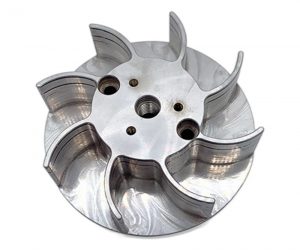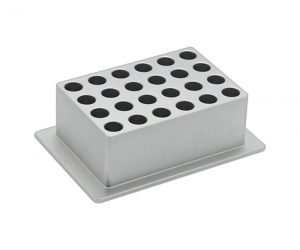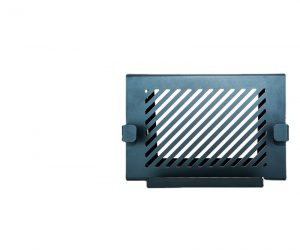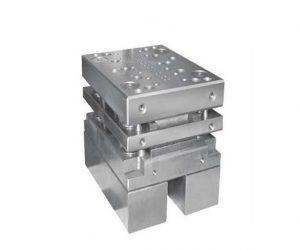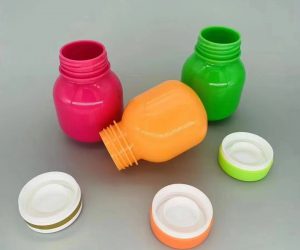The following text provides a nuanced comparison of screw and plunger injection molding, delving beyond simplistic descriptions to illuminate the subtle yet significant distinctions impacting material selection, process optimization, and ultimately, product quality.
Screw Injection Molding: A Deep Dive into Rheological Complexity
Screw injection molding, the dominant paradigm in plastic processing, transcends the mere conveyance of molten polymer. The reciprocating screw, a marvel of controlled chaos, orchestrates a complex interplay of shear, heat transfer, and pressure build-up. The polymer, initially a disordered agglomeration of pellets, undergoes a transformative journey within the heated barrel. The screw's geometry, meticulously designed to optimize melt homogeneity and minimize degradation, dictates the rheological properties of the resultant melt. Injection parameters, far from being simple variables, are intricately interwoven, demanding precise calibration to achieve the desired melt viscosity, ensuring consistent filling of even the most intricate mold cavities. This process, while seemingly straightforward, is a delicate dance between material science and engineering precision, capable of producing parts with tolerances measured in microns. The versatility extends beyond the sheer range of thermoplastic materials; the ability to precisely modulate melt temperature profiles allows for the processing of materials with highly sensitive thermal degradation profiles.
Plunger Injection Molding: A Niche for Thermosets and Specialized Applications
Plunger injection molding, a less prevalent but nonetheless crucial technique, occupies a distinct niche within the broader landscape of plastic processing. Its primary advantage lies in its compatibility with thermosetting polymers, materials that undergo irreversible chemical changes upon curing, rendering them incompatible with the shearing action of a screw. The plunger, a blunt instrument compared to the sophisticated screw, exerts a more direct, less controlled pressure on the material. This simplicity, however, translates into limitations: the lack of melt homogenization inherent in screw injection leads to potential inconsistencies in part quality and a reduced capacity for processing high-viscosity materials. While seemingly antiquated, plunger injection remains vital for specialized applications demanding precise control over the curing process of thermosets, particularly in the fabrication of components requiring exceptional dimensional stability and resistance to elevated temperatures. The absence of shear-induced degradation also makes it suitable for materials sensitive to mechanical stress during the melting phase.
Conclusion: A Strategic Choice Based on Material and Application
The choice between screw and plunger injection molding is not merely a matter of technological preference; it is a strategic decision rooted in a deep understanding of material properties and application requirements. Screw injection molding reigns supreme in its versatility and precision, particularly for thermoplastics. Plunger injection molding, while less versatile, maintains its relevance in the specialized realm of thermoset processing, where its unique characteristics are indispensable. A comprehensive understanding of these fundamental differences empowers manufacturers to optimize their production processes, leading to superior product quality, enhanced efficiency, and ultimately, a competitive edge in the dynamic world of plastics manufacturing.
The seemingly prosaic act of screw plunger injection molding belies a complex interplay of thermodynamic forces and material science. Unlike its simpler, plunger-based counterpart, this process leverages the helical geometry of a rotating screw to not merely convey, but actively plasticize the polymer feedstock. This isn't a passive transfer of material; it's a controlled metamorphosis, where frictional heat and shear forces synergistically break down particulate polymers into a homogenous, molten state. The subsequent injection, driven by hydraulic pressure exerted upon the plasticized mass via a plunger, is far from a brute-force operation. It's a meticulously orchestrated ballet of pressure gradients and flow dynamics, allowing for unparalleled control over injection speed, pressure profiles, and thermal gradients – parameters crucial for achieving optimal part quality and minimizing defects.
This precision, however, comes at a price. The inherent complexity of the screw plunger system necessitates a deeper understanding of its operational nuances. The interplay between screw geometry (pitch, depth, and diameter), barrel temperature profiles, injection pressure curves, and back pressure regulation represents a multi-dimensional optimization problem. Subtle variations in any of these parameters can significantly impact the resulting part characteristics, ranging from subtle variations in dimensional accuracy to catastrophic molding defects. Furthermore, the sophisticated machinery itself demands specialized maintenance and skilled operators, escalating both initial capital expenditure and ongoing operational costs.
The advantages, however, are undeniable. The superior mixing and homogenization capabilities of the screw plunger system facilitate the processing of highly filled or reinforced polymers, materials often intractable using conventional methods. This opens up avenues for creating parts with enhanced mechanical properties, thermal stability, and chemical resistance. The precise control over the injection process translates to exceptionally tight tolerances, consistent part quality, and reduced scrap rates – all crucial factors in high-volume manufacturing environments.
The applications of screw plunger injection molding span a diverse range of industries, each demanding a tailored approach to process optimization. From the intricate geometries of automotive components and the demanding precision of medical devices to the high-volume production of consumer electronics, the versatility of this method is manifest. However, the selection of appropriate screw designs, material choices, and process parameters remains critically dependent on the specific application. The seemingly straightforward act of molding plastic, therefore, reveals itself as a sophisticated engineering challenge, demanding both theoretical understanding and practical expertise. This is not merely injection molding; it's precision polymer processing at its most refined.
What is Screw Plunger Injection Molding?
Screw plunger injection molding is a process in which a thermoplastic material is heated, plasticized, and injected into a mold by means of a screw and a plunger. The screw acts as both a feeding device and a mixing device, while the plunger acts as an injecting device.
The screw plunger injection molding machine consists of two main parts: the plasticizing unit and the clamping unit. The plasticizing unit consists of a hopper, a barrel, a screw, a heater, and a nozzle. The clamping unit consists of a fixed platen, a moving platen, a mold, and a hydraulic ram.
The material is fed from the hopper into the barrel, where it is heated and melted by the heater and the frictional heat generated by the rotating screw. The screw also mixes and homogenizes the material as it moves forward. The melted material accumulates in front of the screw tip, forming a shot.
When the mold is closed, the screw stops rotating and retracts slightly to create a cushion. The hydraulic ram then pushes the plunger forward, which in turn pushes the screw forward. The screw acts as a piston and injects the material into the mold cavity through the nozzle.
The material cools and solidifies in the mold cavity, forming the desired part. The mold is then opened and the part is ejected.
How Does Screw Plunger Injection Molding Work?
The following diagram illustrates the main steps of screw plunger injection molding:
| Step | Description |
|---|---|
| 1 | The material is fed from the hopper into the barrel. |
| 2 | The material is heated and melted by the heater and the frictional heat generated by the rotating screw. |
| 3 | The screw mixes and homogenizes the material as it moves forward. |
| 4 | The melted material accumulates in front of the screw tip, forming a shot. |
| 5 | The mold is closed and clamped by the hydraulic ram. |
| 6 | The screw stops rotating and retracts slightly to create a cushion. |
| 7 | The hydraulic ram pushes the plunger forward, which in turn pushes the screw forward. |
| 8 | The screw acts as a piston and injects the material into the mold cavity through the nozzle. |
| 9 | The material cools and solidifies in the mold cavity, forming the desired part. |
| 10 | The mold is opened and the part is ejected. |
Advantages and Disadvantages of Screw Plunger Injection Molding
Screw plunger injection molding has several advantages over other types of injection molding machines, such as:
- Better control over injection speed, pressure, and temperature
- Improved mixing and homogenization of material
- Faster production rates
- Easier material or color changes
- Lower injection pressures
- Higher quality parts
However, screw plunger injection molding also has some disadvantages, such as:
- Higher initial cost of equipment
- Higher maintenance cost of equipment
- Higher energy consumption
- More wear and tear on screw and barrel
- More sensitive to material viscosity variations
Applications of Screw Plunger Injection Molding
Screw plunger injection molding is widely used for producing parts from thermoplastic materials with complex geometry, high precision, or high performance requirements. Some examples of industries that use screw plunger injection molding are:
- Automotive
- Medical
- Electronics
- Packaging
- Consumer goods
Some examples of products that are made by screw plunger injection molding are:
- Bumpers
- Housings
- Connectors
- Caps
- Toys
Comparison with Other Types of Injection Molding Machines
Screw plunger injection molding is one of the most common types of injection molding machines, but it is not the only one. There are other types of injection molding machines that use different mechanisms to plasticize and inject the material into the mold, such as:
- Reciprocating-screw injection molding: This type of machine uses a single screw that rotates and reciprocates to plasticize and inject the material. The screw has three zones: the feed zone, the compression zone, and the metering zone. The material is fed from the hopper into the feed zone, where it is conveyed by the screw. The material is then compressed and melted in the compression zone, where the screw diameter decreases. The material is then metered and accumulated in the metering zone, where the screw diameter increases. When the mold is closed, the screw retracts and injects the material into the mold cavity. Reciprocating-screw injection molding has better control over material temperature and pressure than screw plunger injection molding, but it also has more shear stress and degradation on the material.
- Two-stage injection molding: This type of machine uses two screws: one for plasticizing and one for injecting. The first screw is a fixed screw that rotates and plasticizes the material in a separate barrel. The second screw is a reciprocating screw that injects the material into the mold cavity. Two-stage injection molding has better mixing and homogenization of material than screw plunger injection molding, but it also has more complexity and cost of equipment.
Conclusion
let's talk about screw plunger injection molding It's a way to make plastic parts using a screw to melt and squirt the plastic into a mold It's really great because you get super precise control over speed, pressure, and temperature, which means better mixing and faster production Plus, switching materials or colors is a breeze, and you need less pressure to make high-quality parts
But, like anything, it has a few downsides The machines are pricier upfront and need more maintenance They use more energy too, and the screw and barrel wear out faster Also, they're a bit fussy if the plastic's thickness isn't just right
This method is awesome for making complicated, super accurate, high-performance parts from plastic You'll find it used in tons of industries, like cars, medicine, electronics, packaging, and everyday stuff
It's not the only way to make plastic parts though There are other types of injection molding machines, each with its own pros and cons The best one depends on what kind of plastic you're using, what you're making, and how many you need
